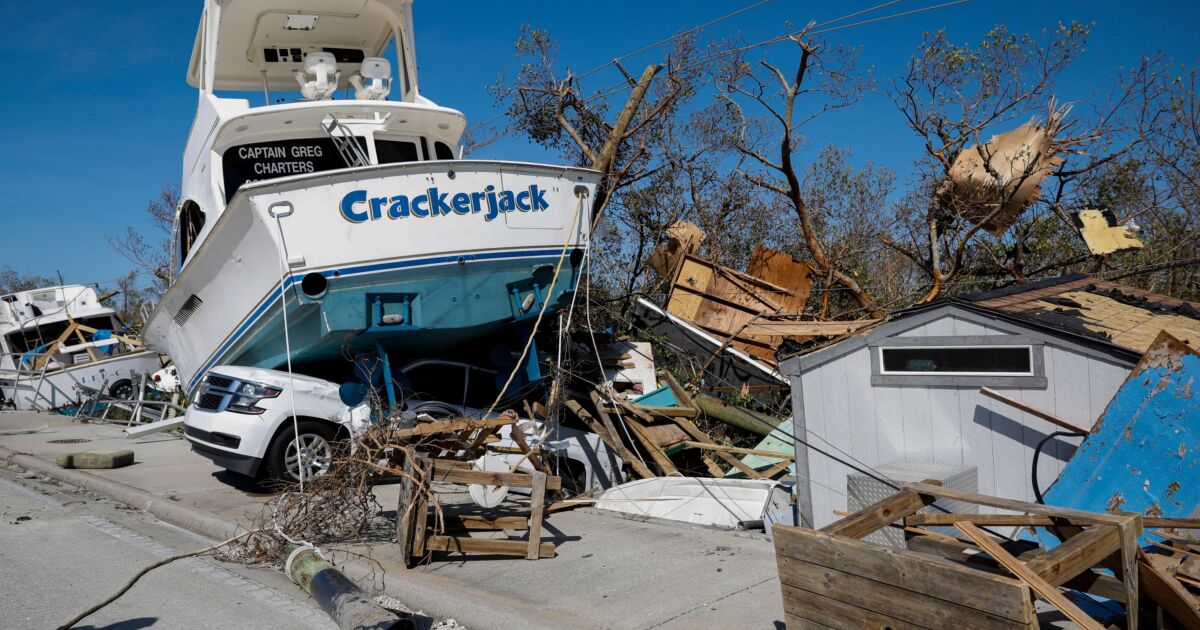Ian delivers stark reminder of climate risks in booming Florida

(Bloomberg) — For Florida’s newest residents, Hurricane Ian is serving as a harsh reminder of the risks of living in a state where sunshine and low taxes have drawn an influx of Americans the last few years.
Thousands of people, from Wall Street financers to everyday folks, moved to the Sunshine State during the pandemic, drawn by its lower cost of living and year-round warm weather. Now, they’ve encountered what may be one of the costliest and most powerful hurricanes in US history.
The storm caused extensive flooding, particularly on Florida’s Gulf Coast, and left millions of homes and businesses without power. With houses and infrastructure in ruin, estimates on the damage are as high as $100 billion. For many of the newcomers, it’s their first major natural disaster in a state that’s particularly prone to climate risks yet still has attracted throngs of people and businesses in recent years.
Andrew Ford, who moved to Sarasota County’s North Port from Nashville, Tennessee, in July, is waiting to see if his new home will be livable after the storm. He put up storm shutters and placed sandbags around the doors before evacuating on Monday night, but isn’t sure how much that will help.
“Right now it just sucks; it’s horrible,” said the 34-year-old, who works at the Atlanta Braves training facility in the area. “At this rate, I don’t know when I’ll be going back.”
Florida, long known as a haven for retirees and anyone trying to avoid harsh winters, was at the center of a pandemic boom as remote work and sky-high home prices led city dwellers in New York, San Francisco and Los Angeles to seek cheaper locales. The area has been home to some of the biggest real estate gains in the country: House prices jumped 67% in the Tampa area and 63% in Miami since March 2020, according to S&P CoreLogic Case-Shiller indexes. That compares with a 41% increase nationally.
The state also has been trying to establish itself as a finance center, with some trying to dub it Wall Street South. Power players from Ken Griffin’s Citadel to Apollo Global Management Inc. have set up shop in Miami, while West Palm Beach has attracted Goldman Sachs Group Inc. and Point72 Asset Management. Ark Investment Management’s Cathie Wood moved her firm to St. Petersburg, where there were evacuations in nearby areas ahead of Ian’s landfall. Ark declined to comment.
Florida’s climate risks mean the influx of newcomers from more expensive states will discover that it’s not such a bargain, said Jesse Keenan, associate professor of sustainable real estate at Tulane University in New Orleans.
Sales and property taxes will have to go up to pay for infrastructure needed for the largely unrestrained growth Florida governments have permitted, along with costs for rebuilding, he said. The estimated losses from Ian’s wind and storm surge are $28 billion to $47 billion, making it the costliest Florida storm since Hurricane Andrew three decades ago, according to CoreLogic Inc.
“If you moved to Florida for the cheap housing and the sunshine, there’s going to be a sticker shock,” Keenan said. “Between property insurance and local taxes, you’re going to pay for these costs one way or other.”
Some 2.4 million properties in Florida — more than one-third of the state’s total — face a greater than 26% chance of being severely affected by flooding within 30 years, according to Risk Factor, a data reporting tool from the nonprofit First Street Foundation. But flood damages often aren’t covered in home insurance policies, which could leave many people with new financial burdens.
The state’s property insurance market was already teetering, Keenan said, and the storm may topple it. Some developments may be uninsurable because they’ll be deemed too risky while many thousands of homeowners will left unable to get insurance, he said.
The Florida real estate market has “not priced in the risk of hurricanes, climate change and weight of its own growth,” Keenan said. “It has grown much faster than the infrastructure can keep up with.”
Harsh Welcome
These days, it’s hard to find a place in the US that is free from risk. Climate change is contributing to more severe weather events across the country, from wildfires in California to extreme heat in Texas and tornadoes across the Midwest. Florida is just the most recent place to get hit.
Carlo Hernandez moved to the Orlando area from Iowa just two weeks ago and was quickly greeted by the storm.
The 26-year-old acting freelancer watched in horror as trees fell on cars in his neighborhood, worried that his own would be totaled. While that hasn’t happened, he’s had to deal with power outages and flooding risks.
Hurricanes weren’t in his plan when he decided he wanted a change of pace in life and sought out warmer climates on the east coast. Still, he has no regrets.
“I knew there was a risk of inclement weather when making this more to Florida, but I just didn’t think I’d experience it so soon,” Hernandez said. “I’m still optimistic about Florida — the weather is nice most of the time.”



